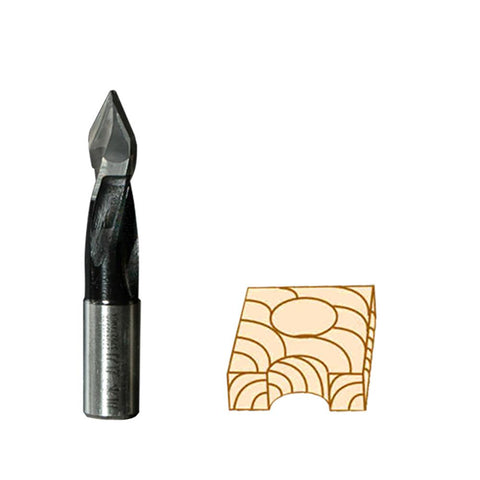Drill bits are essential tools in woodworking, enabling precise and efficient drilling operations. However, not all drill bits are created equal, and distinguishing between wood and metal drill bits is crucial for achieving optimal results. In this article, we will explore the key characteristics and features that help differentiate wood and metal drill bits, allowing you to select the appropriate tool for your specific drilling needs.
Material Composition
The primary distinction between wood and metal drill bits lies in their material composition. Wood drill bits, also known as Brad-point or Spur-point bits, are typically made of high-speed steel (HSS) or carbon steel. These bits are designed with a sharp, pointed tip and flutes along the body to remove wood chips effectively during drilling.
On the other hand, metal drill bits are made from tougher materials such as high-speed steel (HSS), cobalt, or carbide. They are engineered to withstand the high heat generated by drilling through metal and offer superior durability and hardness. Metal drill bits often have a more robust construction and may feature specialized coatings for enhanced performance.
Point Angle
Another crucial factor in distinguishing between wood and metal drill bits is the point angle. Wood drill bits typically have a sharp, pointed tip with a relatively steep point angle, usually around 118 degrees. This angle allows for precise positioning and effortless penetration into wood, ensuring clean and accurate holes.
Metal drill bits, on the other hand, have a more obtuse point angle, typically ranging from 135 to 150 degrees. The broader angle helps to distribute the cutting forces and reduce the likelihood of the bit wandering or slipping on the harder metal surfaces. This design enables metal drill bits to handle the increased heat and pressure generated during metal drilling.
Flute Design
The flute design of a drill bit also provides valuable insights into its intended application. Wood drill bits typically have wider and deeper flutes compared to metal drill bits. The deep flutes in wood bits facilitate efficient chip removal, preventing clogging and overheating during drilling operations in wood.
In contrast, metal drill bits often feature shallower and more compact flutes. The reduced chip space helps to maintain rigidity and strength while drilling through solid metal. Additionally, some metal drill bits may incorporate specialized flute designs, such as parabolic or spiral flutes, to further enhance chip evacuation and improve drilling speed and efficiency.
Cutting Edge
The cutting edge profile is another aspect that sets wood and metal drill bits apart. Wood drill bits typically have a single cutting edge that extends from the tip to the outer edges of the bit. The sharp cutting edge ensures clean and precise cutting action while drilling through wood, leaving minimal tear-out and splintering.
Metal drill bits, on the other hand, often have multiple cutting edges along the flutes. These cutting edges may take the form of flutes with sharp edges or specialized configurations like split points or pilot points. The additional cutting edges enable metal drill bits to create clean, accurate holes in metal while minimizing burrs and providing improved cutting efficiency.
Conclusion
Distinguishing between wood and metal drill bits is essential for selecting the right tool for your drilling tasks. Wood drill bits are typically crafted from high-speed steel or carbon steel, featuring a sharp point angle, deep flutes, and a single cutting edge. They excel at precision drilling in wood, leaving clean and accurate holes.
Metal drill bits, on the other hand, are engineered with tougher materials like high-speed steel, cobalt, or carbide. They have a broader point angle, compact flutes, and multiple cutting edges, enabling efficient drilling through metal while withstanding high temperatures and forces.
By understanding the material composition, point angle, flute design, and cutting edge profile, you can confidently differentiate between wood and metal drill bits, ensuring optimal performance and successful drilling operations in various materials.
